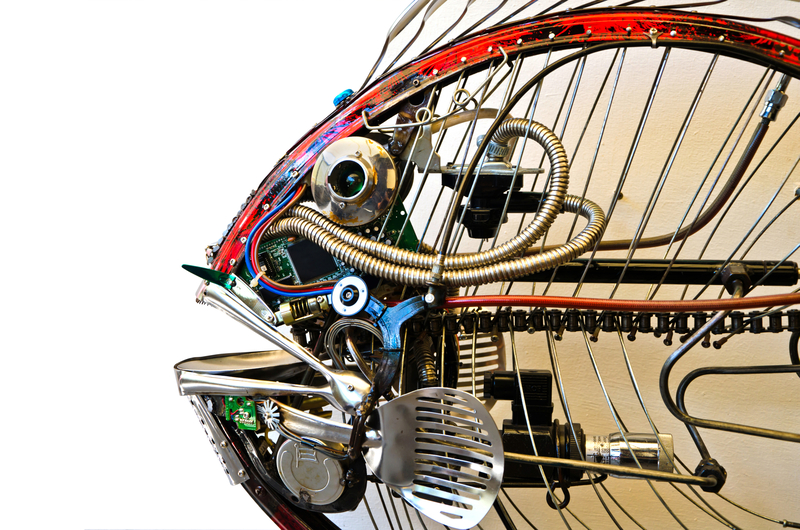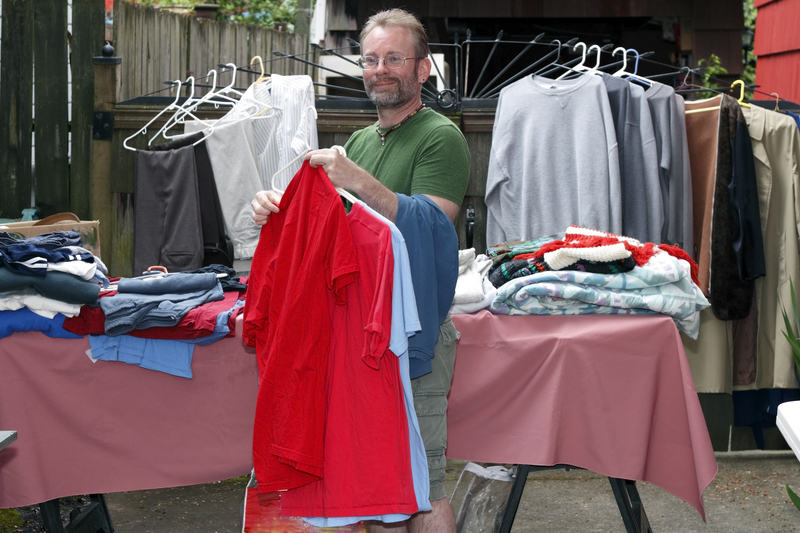Risky Plastics: What to Keep Out of Your Home
Plastics have become an inseparable part of modern life, providing convenience, affordability, and versatility in almost every household. However, not all plastics are created equal. Increasing evidence suggests that certain types of plastic can pose significant health and environmental hazards. Understanding which plastics carry risks and how to limit their presence in your home is crucial for maintaining a safer, healthier living space.
Understanding Plastic Types and Risks
Plastics are identified by a Resin Identification Code (RIC), a number (1 through 7) usually found within a triangle on the bottom of containers. These codes provide information about the chemical composition of the plastic and its potential health impact. Let's explore the most common plastics, the risks they present, and their prevalence in household items.
Plastic #1: PET (Polyethylene Terephthalate)
- Common Items: Water bottles, soft drink bottles, salad dressing bottles, peanut butter jars.
- Risks: Although generally regarded as safe for single use, PET can leach antimony, a potentially toxic substance, especially when bottles are reused, exposed to heat, or left in the sun.
Best Practice: Avoid reusing PET containers. Recycle after one use and opt for reusable glass or stainless steel bottles when possible.
Plastic #2: HDPE (High-Density Polyethylene)
- Common Items: Milk jugs, juice bottles, detergent containers, shampoo bottles, toys.
- Risks: Generally considered a safer plastic, HDPE is sturdy and less prone to leaching. However, some research indicates that under certain conditions, trace amounts of hormone-disrupting chemicals may be released.
Best Practice: While HDPE is preferable to other plastics, limit use for food storage when possible and never heat HDPE plastics.
Plastic #3: PVC (Polyvinyl Chloride)
- Common Items: Cling wraps, shower curtains, some cheap toys, plumbing pipes, vinyl flooring.
- Risks: PVC is widely regarded as one of the most hazardous plastics. It contains phthalates (plasticizers) and can leach vinyl chloride, both of which are linked to hormone disruption, reproductive issues, and cancer. PVC also releases toxic dioxins during production and incineration.
Avoid using products made from PVC, especially those in contact with food or those used by children.
Plastic #4: LDPE (Low-Density Polyethylene)
- Common Items: Bread bags, frozen food bags, grocery bags, squeezable bottles.
- Risks: LDPE is less likely to leach chemicals compared to other risky plastics, but not as widely recycled. While considered low hazard, chemical leaching can still occur with prolonged contact with fatty or acidic foods.
Best Practice: Prefer alternatives like reusable fabric bags and containers when possible.
Plastic #5: PP (Polypropylene)
- Common Items: Yogurt containers, straws, ketchup bottles, microwave-safe containers.
- Risks: Polypropylene is generally seen as one of the safer food plastics. However, it is not impervious to chemical migration, especially under heat.
Avoid microwaving food in polypropylene containers and inspect them regularly for scratches and wear.
Plastic #6: PS (Polystyrene, aka Styrofoam)
- Common Items: Takeaway containers, disposable cups, plates, egg cartons, packaging peanuts.
- Risks: Polystyrene contains styrene, a carcinogen and a neurotoxin, which can leach into food and drinks (especially when hot). Polystyrene is also a major environmental pollutant, breaking down into microplastics.
Avoid all polystyrene products at home, especially for hot foods and drinks.
Plastic #7: Other (Including Polycarbonate, BPA, and New Bioplastics)
- Common Items: Baby bottles, sippy cups, large water bottles, food storage containers, sunglasses, DVDs.
- Risks: This miscellaneous category is infamous for containing BPA, a chemical linked to hormone disruption, developmental issues, and increased cancer risk. Even "BPA-free" products may contain BPS or other substitutes, which can be equally concerning.
Wherever possible, replace #7 plastics with glass, stainless steel, or ceramic alternatives, particularly for anything involving food or children.

High-Risk Plastics: Top Offenders to Keep Out of Your Home
Not all plastics are equally dangerous. For a safer home, focus on eliminating or minimizing plastics that are most likely to leach hazardous chemicals or pose disposal problems. The following plastic types are especially risky:
- PVC (Plastic #3): Contains phthalates, releases dioxins and is found in many home products.
- Polystyrene (Plastic #6): Leaches toxic chemicals, difficult to recycle, breaks down into harmful microplastics.
- Polycarbonate (from Plastic #7, often contains BPA): Used in hard-clear plastics, water jugs, baby bottles, with strong evidence of hormonal impacts.
By keeping these dangerous plastics out of your home, you can dramatically reduce your exposure to toxins and participate in reducing environmental pollution.
Health Effects Linked to Hazardous Plastics
Why are risky plastics a concern? The answer lies in the chemicals they release. Research has linked hazardous plastic ingredients to a host of chronic and acute health issues:
- Endocrine disruption: Chemicals like BPA and phthalates can mimic or block natural hormones, causing developmental, reproductive, and metabolic problems.
- Increased cancer risk: Some plastic additives and plasticizers are known carcinogens, including vinyl chloride (PVC) and styrene (PS).
- Neurodevelopmental effects: Fetuses and young children are especially vulnerable to hazardous plastic chemicals that can affect brain development.
- Allergies and respiratory effects: Off-gassing and fumes from some plastics (especially when heated) can trigger asthma, allergies, and respiratory symptoms.
- Immune system impacts: Chronic exposure to hazardous plastics has been linked to immune dysfunction and increased susceptibility to illness.
Environmental Impact of Dangerous Plastics
*Plastic pollution* is a critical environmental issue of our time, and the most risky plastics often have the biggest impact. Notorious offenders like PVC and polystyrene persist in the environment for hundreds of years, fragmenting into microplastics that infiltrate soil, water, and even our food chain.
- Non-biodegradable: Risky plastics accumulate in landfills and the natural environment, harming wildlife and ecosystems.
- Leaching hazardous chemicals: As these plastics degrade, they release toxins into the soil and water, which can find their way into drinking supplies and crops.
- Microplastics: Tiny fragments are now detected in human organs, drinking water, and even the air, with unknown long-term health effects.
Everyday Sources of Risky Plastics
Many household objects contain risky plastic compounds. Being aware of where these materials are found--and choosing alternatives--can make a huge difference for your family's safety.
- Plastic food containers (especially if labeled #3, #6, or #7)
- Single-use water bottles and beverage cups
- Cling film and plastic wraps, particularly those made from PVC
- Takeout containers, foam plates, and disposable cutlery
- Cheap children's toys and inflatable products
- Shower curtains and vinyl tablecloths
- Older plastic baby bottles and sippy cups
- Cosmetic and toiletry product bottles
- Plastic kitchenware and utensils
How to Reduce Exposure to Toxic Plastics at Home
Making your home safer doesn't mean eliminating all plastic, but it's wise to replace or avoid the most hazardous forms. Here's how you can detox your home from dangerous plastics:
1. Read and Understand Plastic Labels
- Check the recycling code on packaging. Discard or avoid items labeled #3, #6, or #7 unless specifically marked as safe and free of toxins.
- Look for products labeled "BPA-free" but remember that alternatives may not be harmless - glass or stainless steel is most reliable.
2. Switch to Safer Alternatives
- Use glass, stainless steel, or ceramic containers for food and drink.
- Replace vinyl shower curtains and tablecloths with fabric versions.
- Choose wooden, silicone (food-grade), or metal cooking utensils over plastic ones.
- For children and infants, select toys, dishes, and bottles made from natural materials.
3. Never Heat Food in Plastic
- Heating increases chemical leaching. Never microwave or dishwasher plastic containers, especially those not labeled as microwave-safe.
- Transfer food to glass or ceramic before reheating.
4. Avoid Single-Use Plastics
- Say no to disposable cutlery, plates, and cups as much as possible.
- Bring your own reusable containers and shopping bags.
5. Store Food Properly
- Cool food before placing into plastic, even "safe" varieties.
- Choose waxed cloth wraps or silicone lids instead of plastic wrap.
6. Be Careful with Personal Care Products
- Check for microbeads--tiny plastic particles--in exfoliants, toothpaste, and facial scrubs.
- Opt for products packaged in glass, paper, or metal when available.
7. Support Plastic-Free Brands and Legislation
- Choose brands committed to sustainable, non-plastic packaging.
- Support bans and restrictions on the most toxic plastics in your region.
Common Myths About Safe Plastics
Think all "BPA-free" products are safe? Not so fast! Many brands use other bisphenols (like BPS or BPF) that may have similar hormone-disrupting effects. Be skeptical of vague "eco-friendly" labels--always check the material itself.
Microwave-safe just means it won't melt in the microwave; it doesn't guarantee no chemical leaching! Opt for glass or ceramic for ultimate safety.
Recycling plastics doesn't make them risk-free. The recycling process doesn't eliminate hazardous plasticizers and can sometimes concentrate them. Don't rely on recycling symbols as indicators of safety.
Children and Plastics: Why Extra Caution Is Needed
Children are biologically more susceptible to toxic chemicals from plastics. Their rapidly developing organs, small size (leading to larger dose per body weight), and frequent hand-to-mouth behavior mean that plastic toxin exposure can be far more harmful.
- Breastfeeding and infant formula: Old plastic baby bottles may leach BPA or phthalates.
- Crawling and teething: Toys and floormats made from PVC or other risky plastics can be sources of exposure.
- Food storage: Always use glass or stainless steel for baby food and bottles.
Choose certified non-toxic, plastic-free, or food-grade silicone items for little ones whenever possible.
Easy Swaps for a Plastic-Safe Home
- Replace plastic food containers with glass jars, pyrex, or stainless steel tins.
- Switch to beeswax wraps instead of plastic cling film.
- Use fabric or silicone lunch bags instead of plastic.
- Store leftovers in ceramic or glass dishes.
- Drink from glass, steel, or copper water bottles.
- Choose wooden toys and cloth or silicone teethers for infants.

Conclusion: A Safer Home Begins with Awareness
Plastics are deeply embedded in our lifestyle, but not all plastics are safe for your home or your health. By understanding which types of plastics are risky and how to identify and replace them, you can make informed decisions to protect yourself, your family, and the environment.
*Reducing or eliminating dangerous plastics* like PVC, polystyrene, and BPA-containing plastics--especially those in contact with food, infants, and children--can have profound benefits. Choose safer alternatives, stay informed, and make small changes one step at a time for a healthier, plastic-wise home.
Remember: The power of choice is in your hands. Make your home a sanctuary by keeping risky plastics out!
Further Resources on Safe Plastic Use
- Environmental Working Group
- Physicians for Social Responsibility: Health Harms of Plastics
- Consumer Reports: What Do the Recycling Symbols on Plastics Mean?
- Plastic Soup Foundation
*Staying informed and proactive is the best path toward a safer, healthier, and more sustainable home environment.*